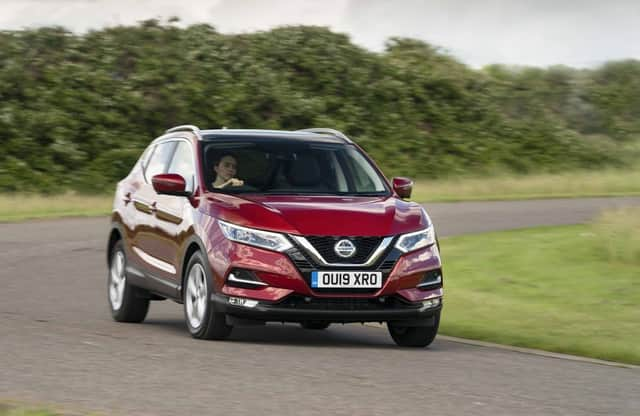Nissan Qashqai review - leader of the pack is falling behind


Love them or hate them, you can’t deny that crossovers and SUVs are the current golden child in the automotive world.
Plenty of brands claim to have invented the concept but regardless of who came up with the first one, it was Nissan that kicked started the SUV revolution in earnest with the Qashqai.
Advertisement
Hide AdAdvertisement
Hide AdQuite what it was that made the Qashqai take off in the way it did is hard to pin down but its success is beyond question. Well in excess of two million examples have been sold since its launch in 2007 and it is a permanent fixture on the list of best-selling models in the UK.
2014 saw the launch of an all-new second generation which was then upgraded quite significantly in 2017.


That update brought big visual changes, new driver assistance technology and interior improvements and was followed in late 2018 by a refresh of the engine line-up.
The engine change was driven by changing emissions rules but it has proved a worthwhile one. Borrowed from some-time partner Daimler, it’s the same 1.3-litre unit that appears in the Mercedes A-Class and does as good a job in the Nissan as it does in the Merc.
Advertisement
Hide AdAdvertisement
Hide AdIt might sound relatively small for a car the size of the Qashqai but modern engine technology is mightily impressive and its 138bhp feels perfectly adequate.
In the Qashqai it offers a smooth, quiet and pretty responsive drive. There’s a lack of low-down torque but keep the revs up and it reacts quickly and feels more lively than the on-paper 0-62mph time of 10 seconds would suggest.
Nissan Qashqai Tekna
- Price: £26,895
- Engine: 1.3-litre, four-cylinder, turbo, petrol
- Power: 138bhp
- Torque: 177lb ft
- Transmission: Six-speed manual
- Top speed: 120mph
- 0-62mph: 10.5 seconds
- Economy: 49.6mpg
- CO2 emissions: 130g/km
In our test car that’s helped by the six-speed manual transmission. It’s not as precise as some rivals’ but I still prefer it to the ponderous seven-speed auto that’s also available.
The official economy figure is around 50mpg, which was reflected in our car’s long-term trip computer, although I saw mid-30s thanks to a series of short, economy-ruining journeys.
Advertisement
Hide AdAdvertisement
Hide AdWhile rivals like the Seat Ateca and Ford Kuga pride themselves on their “sporty” road manners, the Qashqai is closer to something like the comfort-focused Citroen C5 Aircross. The ride is very pliant, possibly verging on the too soft but it does a good job of offering consistent comfort over some terrible surfaces.
That smoothness is enhanced by decent cabin refinement and space that’s among the best in class.


Unfortunately, the cabin also exposes the Qashqai’s biggest and longest-lasting problem. In the face of high-tech, high-quality modern, clear designs in rivals the Qashqai is a serious letdown. Even 2017’s update failed to address failings in material quality and layout, with brittle, shiny plastics in abundance and a tiny touchsceen with sluggish performance and terrible graphics.
The Qashqai at least makes up ground again with its standard equipment. Our £27,000 Tekna edition features full-LED lights all around, with an adaptive front lighting system; safety and vision packs that load it with forward and rear collision alerts, lane departure warning, emergency braking, traffic sign recognition, blind spot warning and 360-degree parking cameras and parking assistance. An opening panoramic sunroof, 19-inch alloys, part-leather upholstery and a eight-speaker Bose premium stereo also go some way to softening the pain of the interior.
Advertisement
Hide AdAdvertisement
Hide AdFundamentally, the Qashqai is a nice driving, fine-riding car but it’s let down badly by its cheap and nasty interior. Perhaps such things shouldn’t matter as much as economy and refinement but as a driver you spend all your time looking at and using the car’s interior features and so many rivals do a better job here than the Nissan.
This article first appeared on The Scotsman